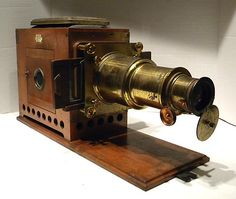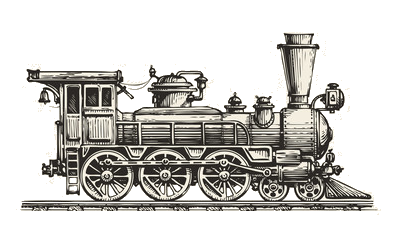
This collection of 19th century slide shows is drawn mostly from text book illustrations, political publications, and potted histories of the era. The publications themselves are linked beside the slide show. Edward S. Ellis, prolific nineteenth century teacher, journalist, and famous author of youth fiction, is prominent. He also wrote election guides for the presidential elections of 1900 and 1904, which, being before WW I, are more 19th century than 20th. Click the banner above to see what he wrote. Or click the picture at right, for a slightly different take.
To understand the 19th century from its own point of view, the era's popular wisdom, we can see what they thought important. First, here is a brief slide-show excursion  from a popular blog to address the inverted question of what they thought about things we find important. Other slide shows, below, are vintage looks at what they found important.
from a popular blog to address the inverted question of what they thought about things we find important. Other slide shows, below, are vintage looks at what they found important.
The illustrations from Edward S. Ellis's book, The Nineteenth Century, Its History, Progress, and Marvelous Achievements, constitute this slide show. For an excellent understanding of nineteenth century conventional thought, read Mr. Ellis' introuction, a recollection of the "marvels of the century."
He closes with interesting prophecies for the next 100 years, and attacks many of the right problems. His predictions extrapolate popular wisdom. For example, three years before the invention of the airplane, he predicts personal flight, but with balloons.
You may delight in things the book leaves out. For example, Mark Twain appears grudgingly, but not Walt Whitman, or Herman Melville. There are no Lincoln assassination pictures, and few of the Civil war. None depicting slavery. Custer appears at Gettysburg, but not Little Bighorn. No Buffalo Bill. No Alaska or Colorado gold rush. Karl Marx? Nein.

The illustrations from Edward S. Ellis's book, Library of American History, Volume 1 (covering earliest discoveries to mid eighteenth century), are seen here. The work itself is also linked.

The illustrations from Edward S. Ellis's book, Library of American History, Volume 2 (covering the period of the American Revolution), constitute this slide show. The work itself is linked at right.

The illustrations from Edward S. Ellis's book, Library of American History, Volume 3 (from the Constitution through the Buchanan administration), constitute this slide show. The work itself is linked at right.

The illustrations from Edward S. Ellis's book, Library of American History, Volume 4 (from 1861 through 1863), constitute this slide show. The work itself is linked at right.

The Louisiana Fair was held in 1904, but reflects the culture of the previous century. As was wont in that time, they begin with the Romans. Illustrations are from Louisiana and the Fair, an Exposition of the World, it's people and their Achievements. The book is linked at right.

Aeronautics was being discussed and widely considered by 1893. Here are some illustrations, but to get a good feel for the subject, you should review the theoretical speculation inside. The journal is linked at right.

Frank Leslie's Illustrated Newspaper, 1875. Frank Leslie (Henry Carter: 1821-1880) founded his Illustrated Newspaper in 1855 and his widow continued it after his death until 1922. It followed the news, popular wisdom and stereotypes of its day. Warning: 19th century norms can be offensive to 21st century tastes.







